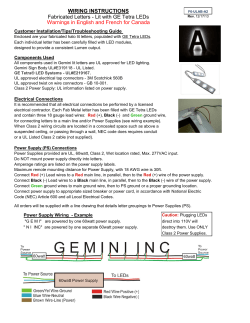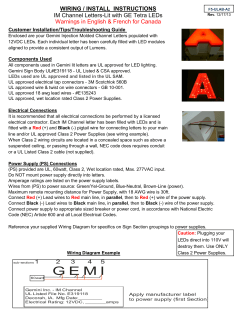
Contemporary Treatment of Chronic Total Oclusions Valeri Gelev University Emergency Hospital
Contemporary Treatment of Chronic Total Oclusions Valeri Gelev University Emergency Hospital “N.I.Pirogov” Sofia e-mail: vlgelev@abv.bg Scope of the Problem • CTO frequency 20 -30% of all coronary angiography. • More than 50% are without previous MI • Most of symptomatic and with preserved LV function. • Only 1/3 of these pts are revascularized. SYNTAX Trial Design 62 EU Sites + 23 US Sites Heart Team (surgeon & interventionalist) Amenable for both treatment options Amenable for only one treatment approach Stratification: LM and Diabetes Randomized Arms N=1800 CABG n=897 Total Occlusion 26.2% vs Two Registry Arms TAXUS* n=903 CABG n=1077 PCI n=198 Total Occlusion 27.0% Total Occlusion 59.3% Total Occlusion 39.1% * TAXUS Express; Site-reported, patient-based Patient Characteristics (I) Total Occlusion Subset: CABG vs PCI CABG TO N=235 PCI TO N=244 P value 64.3 ± 10.4 64.5 ± 10.3 0.82 85.5 79.1 0.07 28.2 ± 4.5 28.3 ± 4.7 0.91 Medically-treated Diabetes, % 26.4 31.6 0.21 Hypertension, % 76.5 76.5 0.99 Hyperlipidemia, % 78.2 83.3 0.16 Fasting Glucose 110 mg/dL, % 38.6 52.8 0.007 Triglycerides 150 mg/dL, % 44.4 38.7 0.22 Poor LVEF (<30%), % 3.0 2.5 0.73 Current smoker, % 20.5 18.0 0.49 Prior MI, % 45.5 34.9 0.02 Unstable angina, % 25.1 29.5 0.28 Additive euroSCORE, mean ± SD 3.6 ± 2.8 3.7 ± 2.7 0.73 Total Parsonnet score , mean ± SD 8.4 ± 6.9 8.7 ± 6.8 0.61 Age, mean ± SD (y) Male, % BMI, mean ± SD Site-reported data Clinical Indications why open a chronically occluded coronary artery? • Symptom control Angina CHF Fatigue • Improve LV function Regional Global • Survival Improved tolerance of AMI Complete revascularization Ischemic Risk CTO Recanalization and Angina Control Successful PCI (n) Follow-up (months) Asymptomatic (%) Olivari 2003 248 12 88.7 Berger 1996 139 6 87 Stewart 1993 45 12 68 Ivanhoe 1992 264 36 69 Ruocco 1992 160 24 69 Bell 1991 234 32 76 Series Symptom Relief FACTOR Trial 10 Angina Frequency 14 Physical Limitation % 21 Quality of Life -30 -20 -10 0 10 20 30 Effect of Procedural Success Clinical Endpoints SAQ Health Status at 1 Month J. Aaron Grantham Long Term Survival with CTO PCI success vs. failure N Era Mean Follow-up Survival % Survival % (years) (CTO Success) (CTO Failure) P Value Suero 2007 1980-1999 Cumulative 10 yr 73.5 65.1 0.001 Hoye 874 1999-2002 4.47+/- 2.69 93.5 88.0 0.02 Aziz 199 2000-2004 Cumulative 2 year 98.0 94.2 0.045 Olivari 390 2003 1 Year 98.1 92.8 <0.005 Prasad 1,262 1979-2005 Cumulative 10 years ~78 ~72 0.025* De Labriolle 172 2003-2005 2 years 95.1 Valenti 486 2003-2006 Cumulative 4 year 91.6 87.4 0.025 *New YorkMilan CTO registry 1362 2000-2007 3 years 96.4 91.3 0.012 *Dartmouth 487 1996-2008 Cumulative 7 years 87.0 74.0 0.09 94.7 0.30 ↓ 44% Mortality ↓ 75% CABG ↓ 55 % Symptoms 13 CTO Registries # 7288 ~ 6 years D. Joyal et al. Am Heart J. 2010;160:179-87 SYNTAX Trial Design 62 EU Sites + 23 US Sites Heart Team (surgeon & interventionalist) Amenable for both treatment options Amenable for only one treatment approach Stratification: LM and Diabetes Randomized Arms N=1800 CABG n=897 Total Occlusion 26.2% vs Two Registry Arms TAXUS* n=903 CABG n=1077 PCI n=198 Total Occlusion 27.0% Total Occlusion 59.3% Total Occlusion 39.1% * TAXUS Express; Site-reported, patient-based Total Occlusion Procedural characteristics Per lesion analysis CABG n=266 12 were not treated with CABG CABG n=254 Not Bypassed n=81 Bypassed n=173 Reason not bypassed: Not intended to treat (n=12) Diseased (n=11) Inadequate conduit (n=2) Too small (n=19) Unable to find (n=1) Other (n=36) Overall 68.1 % of TO were successfully bypassed ITT, Per Lesion Total Occlusion Procedural characteristics Per lesion analysis PCI n=277 PCI n=269 Attempted to treat n=250 Unsuccessful n=117 8 were not treated with PCI Not attempted n=19 7% Successful n=133 Overall 49.4 % of TO successfully treated Per Lesion Success rates study Puma et al review JACC 1995 no of CTOs % success 4664 65 397 81 Corco et al CCD 1998 56 79 Kähler et al CCI 2000 107 42 Serruys et al TOTAL EHJ 2000 303 50 Noguchi et al CCI 2000 226 59 LeFevre et al AJC 2000 88 53 Suero et al JACC 2001 2007 74 Saito et al CCI 2003 262 71 Hoye et al EHJ 2005 885 65 8995 68 Kinoshita et al JACC 1995 Overall CONTEMPORARY CTO DEVELOPMENT Dual injection (recently widely adopted) Development of dedicated CTO wires Development of OTW balloons and microcatheters Development of CTO techniques CTO GUIDE WIRE MILESTONES 1996 1995 Crosswire Choice PT 1st Polymer Covered GW ASAHI Miracle 1st Dedicated CTO spring coil GW 2008 GUIDANT TERUMO SCIMED 2010/11 1999 1st Nitinol Hydrophilic CTO Guide Wire 2009 HT CROSS-IT XT Tapered Tip Design ASAHI Confianza/Pro Tappered hydrophilic wires ASAHI ASAHI Fielder XT Polymer Covered Tapered Guide Wire ABBOTT PROGRESS Polymer Sleeve CTO GWi incorporating Penetration Power SION Fielder XT-A/R Tip Double Coil GW Development of CTO Techniques Single wire Parallel wire IVUS guided STAR Retrograde Antegrade SCTs Dissection & Reentry 2008 2005 2004 2001 2000 Options for optimal antegrade strategies Anchoring technique in a side branch proximal to the occlusion Use of soft tapper tip polymeric/hydrophilic wire to start in combination with a microcatheter (mosty Finecross antegradely; 1.6 Fr) Filder XT Whisper LS Pilot 50 Escalation to stiff/stiffer spring coil wires with or without polymer/coatingsingle wire technique Parallel wire technique “step-up” wire approach Miracle/Miracle Ultimate Confianza / Confianza pro PROGRESS 140-200T Implementation of limited subintimal antegrade techniques (dissection/reently) Mini STAR: stiff wire to cross the lesion followed by soft wires for re-enty LAST (limited antegrade subintimal tracking): stiff wire to cross the lesion followed by soft wires for reentry Hydrodynamic recanalisation Use of dedicated devices (Bridge Point) Shift to the retrograde techniques PARALLEL WIRE TECHNIQUE Bilateral injection Bi-radial access GC: EBU 3.5 –JR4 6 Fr Finecross MC/Fileder XT 67y♂, LAD CTO second attempt Parallel wire technique Trapping technique for Finecross MC exchange; 6Fr is enough Parallel wire - escalate to a stiff/er wire usually tapper tip wires Currently the “sequential stepup” stiff-er-st is not advocated Confianza pro 12 Fielder XT Wire cross in true lummen-Confirmation with contralateral injection Final result after 2 XIENCE Prime DES Trends in Antegrade Approach Dissection / Reentry techniques STAR Hydrodynamic recanalisation Mini-STAR; stiff followed by soft wires LAST (Limited Antegrade Subintimal tracking); soft (knuckle) followed by stiff wires 73y♂, LCX CTO Bilateral injection Femoral-radial access GC: EBU 4 –JR4 6 Fr Finecross MC/Fielder XT failed to puncture the proximal cup Stiff-st step up wire approach From Fielder XT to PROGRESS 200T Proximal cup penetration Finecross MC advancement in the occlusion body Back to soft wires with of without Knuckle ……. Fielder XT CTO crossing with knuckle technique Mini STAR technique Final result after implantation of two XIENCE Prime DES Retrograde Techniques CART / X-CART Retrograde wire crossing Marker/kissing wire Concept of CART technique 1. Both wires in subintimal space 2. Dilation by retrograde balloon 3. Dilated subintimal space 4,5,6. Then the antegrade wire is easily directed into the dilated subintimal space. Concept of CART technique -Controlled Antegrade and Retrograde subintimal Tracking AW RW Concept of CART technique -Controlled Antegrade and Retrograde subintimal Tracking AW RW Concept of CART technique -Controlled Antegrade and Retrograde subintimal Tracking AW RW CART technique, Katoh 2005 Stent Reverse-CART technique late 2006-2007 Stent Reverse-CART technique late 2006-2007 Stent Reverse-CART technique late 2006-2007 Adjunctive techniques 1. IVUS guidance (Japanese driven-not widely adopted) Proximal/distal cup recognition Wire guidance in true lumen Antegrade/retrograde subintimal connection 2. Retrograde wire externalisation Dedicated wires Snare wires 3. Anchoring/Trapping techniques Retrograde wire (antegrade GC/donor GC) Antegrade wire (distal occluded vessel) 4. Septal overdilatation (2mm long balloons) 5. Knuckle wire technique Retrograde wire externalisation ECC CONSENSUS ON THE RETROGRADE APPROACH The retrograde technique represents a breakthrough in CTO recanalisation with success rates exceeding 90% in complex CTOs and it has comparable complication rates with contemporary antegrade techniques. Current evidence suggests that they should be reserved for second attempts after antegrade failure, or as strategies of choice in very complex CTOs where the expected antegrade success rate is <50%. Recent trends in practice suggest implementation of the retrograde techniques after short antegrade failures (aimed at reducing procedure duration, contrast consumption and radiation exposure), but until more data become available this approach should be reserved for very experienced operators. Retrograde techniques should be reserved for very experienced antegrade operators (>300 CTOs and >50 per year). A minimum of 50 retrograde procedures (25 as second operator and 25 as first under supervision) are required before a cardiologist becomes an independent retrograde operator. Sianos et al. EuroIntervention 2012 CTO-PCI Success Rate in Toyohashi Heart Center 100 % 84,2 86,3 2004 2005 92,4 92,2 91,6 91,5 92,6 2006 2007 2008 2009 2010 79 80 71,3 74 73,5 2001 2002 64,9 60 40 20 0 1999 2000 2003 CTO PCI success in Europe (%) 06/07: all members - since 2008 Online Registry 100 90 80 70 60 50 40 30 20 10 0 75 77 80 82 86 2006 (3591) 2007 (3090) 2008 (1215) 2009 (1608) 2010 (1977) * Study Year n Ivanhoe et al Bell et al Ruocco et al Tan et al Stewart et al Kinoshita et al Corcos et al Noguchi et al Kähler et al Serruys et al Lefevre et al Suero et al Olivari et al Saito et al Hoye et al Drozd et al Fang et al Han et al Han et al Drozd et al Arslan et al Prasad et al Valenti et al De Labriolle et al Meta-Analyses Puma et al Joyal et al 1992 480 317(66%) 1992 354 234(66%) 1992 271 160(59%) 1993 312 191(61%) 1993 100* 47(47%) 1995 397 352(89%) 1998 56* 44(79%) 2000 226 134(59%) 2000 107* 45(42%) 2000 303 152(50%) 2000 88 47(53%) 2001 2007 1403(70%) 2003 390* 286(73%) 2003 262 187(71%) 2005 885* 576(65%) 2005 460 299(65%) 2005 294 175(60%) 2005 1494* 1317(88%) 2006 1625* 1445(89%) 2006 459 293(64%) 2006 172 117(68%) 2007 1262 879(70%) 2008 527* 361(68%) 2008 172 127(74%) 1995 4664 2010 7288 Success (%) Study 2902(65%) 5058(69%) Aziz et al Soon et al Safley et al Mitsudo et al Yi et al Rathore et al Garcia-Garcia et al Rathore et al Chen et al Paizis et al Ehara et al Hsu et al Grantham et al Garibaldi et al Matsukage et al Werner et al Morino et al Yang et al Li et al Cho et al Li et al Kirschbaum et al Tomasello et al Liu et al Year n 2007 2007 2008 2008 2009 2009 2009 2009 2009 2009 2009 2009 2010 2010 2010 2010 2010 2010 2010 2010 2011 2011 2011 2011 572* 43* 2608 116* 1332 468 142 904*# 162* 106 110* 69* 125 121 141# 674 392* 419 74* 72 447 72 328*# 120 # Success (%) 400(70%) 24(56%) 1910(73%) 105(91%) 1202(90%) 390(83%) 89(63%) 791(88%) 138(85%) 82(77%) 93(84%) 62(90%) 69(55%) 78(64%) 124(88%) 405(60%) 354(90%) 292(70%) 57(77.0%) 55(76%) 382(86%) 43(60%) 283(86%) 97(81%) Antegrade Success Rates *Refers to the number of CTO lesions; # Small percent of cases with retrograde approach is included Retrograde Approach; Success Rates Author RA Cases RA Facilitated Feasibility Success Rate Surmely et al (2006) 10 10 100% (10/10) 100% (10/10) Surmely et al (2007) 21 19 90.5%(19/21) 78.9%(15/19) Di Mario et al (2007) 17 13 76.5%(13/17) 100%(13/13) Sheiban et al (2007) 18 16 88.9%(16/18) 75%(12/16) Saito (2008) 45 37 82.2% (37/45) 83.8% (31/37) Sianos et al (2008) 175 141 80.6% (141/175) 91.5% (129/141) Rathore et al (2009) 157 115 73.2% (115/157) 89.5% (103/115) 28/31* 25 80.6% (25/31) 80% (20/25) 122 99 81.1% (99/122) 86.9% (86/99) 46/50* 31 62% (31/50) 100% (31/31) Kimura et al (2009) 224 197 87.9% (197/224) 87.8% (173/197) Morino et al (2010) 136 101 74.3% (101/136) 93.9% (95/101) Rathore et al (2010) 31 31 n/a** 100%(31/31) 124 114 91.9%(114/124) n/a 93 90 96.8%(90/93)## 98.9%(89/90) Ge et al (2010) 42 34 80.9% (34/42) 94.1% (32/34) Lee et al (2010) 24 18 75%(18/24) 94.4%(17/18) Rinfret et al (2011) !# 42 36 36/42(85.7%) 97.2%(35/36) 1269 1037 1037/1269(81.7%) 91%(922/1013) Chung et al (2009) Thompson et al (2009) Hsu et al (2009) Tsuchikane et al (2010) # OVERALL * Lesions, ** Refers only to IVUS X-CART (non consecutive patients), # Refers only to patients with X-CART technique, ## Refers to Corsair crossing, !# Bilateral access in 37(88%) of the cases DES in CTO Sianos et al, Eurontervention 2012 Relative paucity of data There are no prospective randomized trials, properly powered for hard clinical endpoints (survival, MI), comparing contemporary optimal medical therapy with contemporary state of the art CTO recanalisation The EURO-CTO Trial Evaluation of the Utilisation of Revascularisation vs Optimal medical therapy for CTOs 1200 patients 40 operators >80% success rate Started early 2012 2012 consensus document from the EuroCTO club Consensus on indication Sianos et al. EuroIntervention 2012 “CTO recanalisation is indicated in patients with symptoms and evidence of ischemia. In patients with prior Qwave myocardial infarction viability should be confirmed.” CTO in 2012 Unfortunately contemporary CTO techniques still remain in the hands of few experts……..The EuroCTO club numbers around 40 members….. Long term angiographic and clinical outcomes of patients treated with contemporary CTO techniques are largely unknown (paucity of data). A good CTO operator is the one that he recognizes his limits; safety above all. Patients selection and training/education are of paramount importance and are the key parameters that will balance between what is feasible and what it make sense to do… Other Methods to Deal with CTOs… Sobajima, M., T. Nozawa, et al. (2012). "Repeated sauna therapy improves myocardial perfusion in patients with chronically occluded coronary arteryrelated ischemia." Int J Cardiol. BACKGROUND: Repeated low-temperature sauna (Waon) therapy relieves ischemic symptoms in patients with peripheral arterial disease. We investigated whether Waon therapy could improve myocardial perfusion in patients with ischemia related to chronic total occlusion (CTO) of coronary arteries. METHODS: Twenty-four patients who had ischemia in the CTO-related area were examined. The severity of ischemia was quantified by thallium-201 myocardial perfusion scintigraphy with adenosine. The Waon group (n=16) was treated daily for three weeks with a 60 degrees C far infrared-ray dry sauna bath for 15min and then kept in a bed covered with blankets for 30min. The control group (n=8) underwent myocardial perfusion scintigraphy twice with a three-week interval. RESULTS: In the control group, neither summed stress score (SSS) nor summed difference score (SDS) of myocardial scintigraphy changed. However, Waon therapy improved both SSS (16+/-7 to 9+/-6, p<0.01) and SDS (7+/-4 to 3+/-2, p<0.01), and the improvement was greater in patients with higher SSS and SDS scores at the baseline. Waon therapy extended treadmill exercise time (430+/-185 to 511+/-192s, p<0.01) and improved flow-mediated dilation of the brachial artery (4.1+/-1.3 to 5.9+/-1.8%, p<0.05), but tended to decrease the number of circulating CD34-positive bone marrow-derived cells. CONCLUSIONS: Waon therapy improves CTOrelated myocardial ischemia in association with improvement of vascular endothelial function. This therapy could be a complementary and alternative tool in patients with severe coronary lesions not suitable for coronary intervention.
© Copyright 2025





















